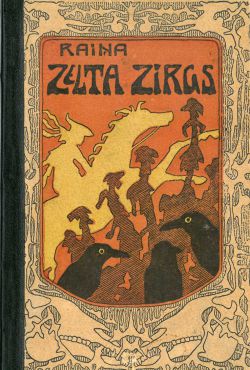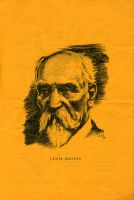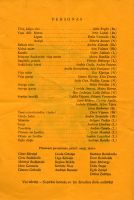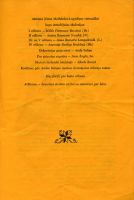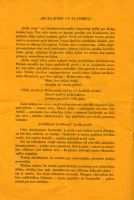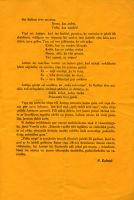Zelta Zirgs is one of Latvian poet and playwright Rainis' most performed plays, also widely acknowledged as his best. Rainis wrote it over a period of about four weeks from October to November 1909 for performance that December at the New Rīga Theater, which had requested a new children's play for Christmas.
Plot
Rainis was inspired by the Estonian folk tale "A Tale of a Queen Daughter Who Slept for Seven Years", published in German in the collection "Estonian Tales" (1869) titled as "How the King's Daughter Slept Seven Years" (Wie eine Königstochter Jahre geschlafen) by the writer and folklorist Friedrich Reinhold Kreutzwald. The tale is a variant of The Princess on the Glass Hill. It is a story of a princess who falls asleep at the top of a glass hill, and three sons who must go guard their father's grave after his death. The older brothers do not want to do this, while the younger one is given the ability to summon a copper, silver and golden horse for the guarding. The tale's hero rides the golden steed to the top of the glass hill, brings the princess down, and takes her as his wife. When the king arranges a grand wedding, his older brothers die out of envy.
In the play, Rainis closely follows the telling of the fairy tale, utilizing both its most important characters — the king, the princess, the three sons of the father, and the main threads of the plot. Rainis' innovation is his insertion of symbolic characters into the play — Baltais Tēvs, the White Father, who appears in Rainis' earliest works, and Melnā māte, the Black Mother. Through their pairing and interaction, Rainis injects the philosophical problem of greatest significance to him: the struggle between light and darkness, first developed in his play Fire and Night (1905).1
Program
The Latvian schools of the New York metropolitan area staged Zelta Zirgs in October 1965, celebrating the centenary of Rainis' birth, under the direction of Ņina Melbārde-Lagzdiņš. All the actors were elementary school students.2 Peters and some four dozen students spent numerous weekends in rehearsals and costume preparations, in his case, at the parish house in Brooklyn, practicing for his albeit minor role as one of the seven ravens guarding the princess, judging from the program and by order of names listed, performing as Otrais krauklis, Second Raven. All these years later, Peters remember his wings but not his lines.
Peters unearthed his copy of the program in 2021 while sorting through old files and was surprised to recognize more than one name among the cast members with whom he connected decades later under completely different circumstances — not realizing they shared a childhood bond from a crisp autumn Sunday in 1965. (The schools were each assigned an act to prepare, rehearsed mostly separately.)
Our translation and background js/index.html.
| 1 | “Zelta zirgs” at the Latvian Encyclopedia (IN LATVIAN) |
| 2 | Latvian Sunday School took place on the weekend, either Saturday or Sunday, and other than the sciences and math included a full range of subjects: history, geography, literature, penmanship,.... |
 Gallery
Gallery